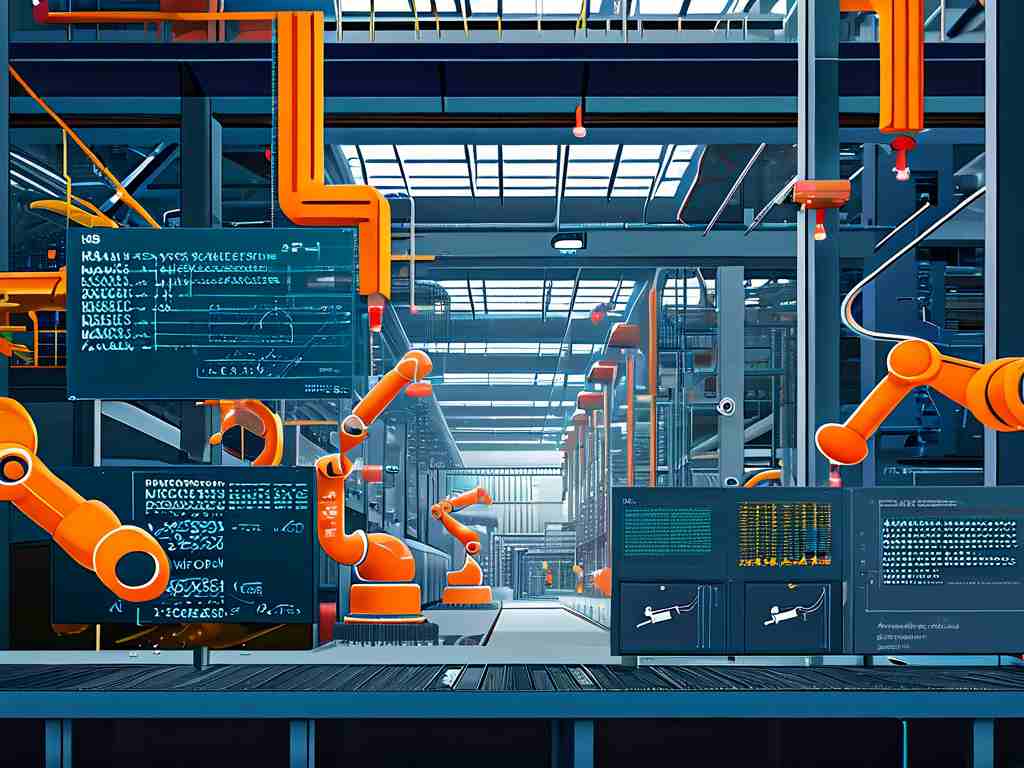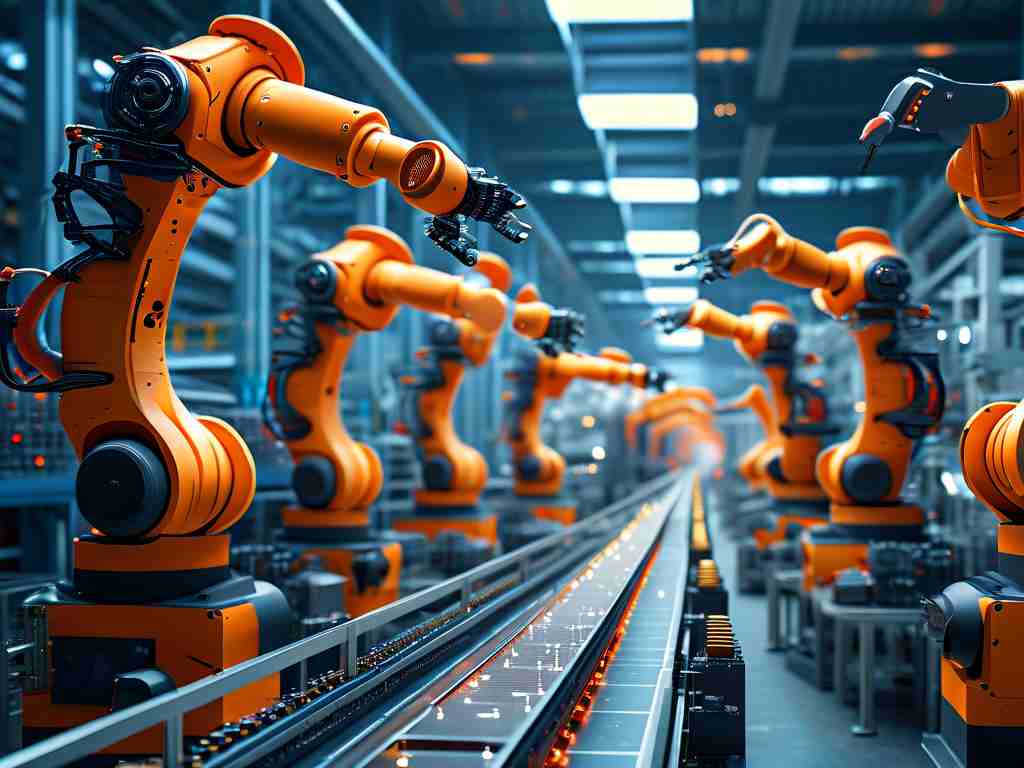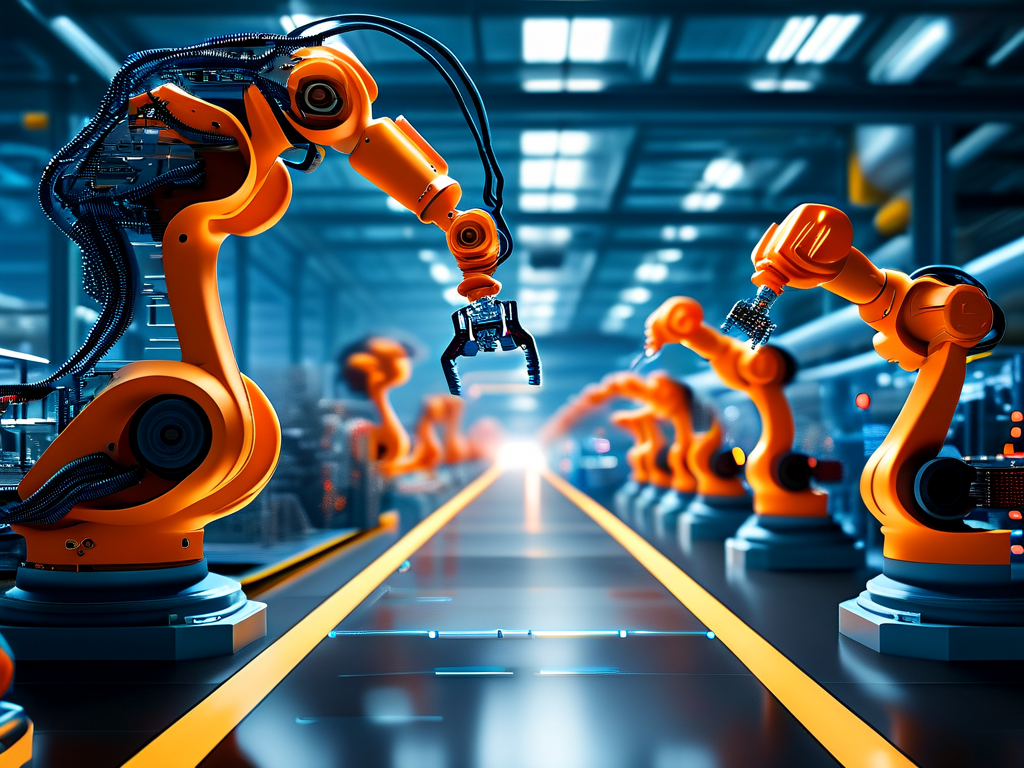In the era of Industry 4.0 and smart manufacturing, algorithms have become the backbone of industrial operations. This article explores seven widely used algorithmic approaches transforming modern industries, supported by real-world implementation cases and performance statistics.

1. Predictive Maintenance with Machine Learning Time series forecasting algorithms like ARIMA and Prophet enable equipment failure prediction with 85-92% accuracy. General Electric's Predix platform uses recurrent neural networks (RNNs) to reduce unplanned turbine downtime by 40% across 15,000 installations. Anomaly detection algorithms like Isolation Forests achieve 0.89 F1-scores in identifying abnormal vibration patterns.
2. Optimization Algorithms in Supply Chains Mixed-integer programming (MIP) solves complex logistics problems:
- DHL implemented MIP-based route optimization, cutting fuel costs by 12%
- Genetic algorithms optimize warehouse layouts, improving picking efficiency by 28%
- Simulated annealing reduces semiconductor fab scheduling conflicts by 33%
3. Computer Vision for Quality Control YOLOv5 object detection achieves 99.4% precision in automotive part inspection. BMW's production lines employ convolutional neural networks (CNNs) that process 12,000 weld seam images/hour with <0.1% false positives. PCA-based defect detection systems in pharma packaging lines achieve 6σ quality levels.
4. Process Control with PID and Advanced Variants While traditional PID controllers remain prevalent (78% of chemical plants), model predictive control (MPC) algorithms:
- Reduce energy consumption in oil refineries by 15-20%
- Improve steel rolling mill thickness accuracy to ±0.15mm
- Enable 22% faster setpoint achievement in polymer reactors
5. Digital Twin Simulation Algorithms Discrete event simulation models optimize factory layouts:
- Boeing reduced aircraft assembly time by 19% using AnyLogic simulations
- Finite element analysis (FEA) algorithms cut automotive prototype testing costs by $2.1M/project
- Siemens' digital twin solutions leverage Kalman filters for real-time synchronization (98.7% data fidelity)
6. Energy Management via Reinforcement Learning Deep Q-learning algorithms in smart grids:
- Balance renewable energy fluctuations with 94% efficiency
- Optimize data center cooling, reducing PUE from 1.6 to 1.3
- Enable 17% cost savings in steel plant peak load shifting
7. Natural Language Processing for Maintenance Logs BERT-based models analyze equipment repair records:
- Identify root causes 5x faster than manual methods
- Predict spare part requirements with 88% accuracy
- Reduce mean-time-to-repair (MTTR) by 34% in power plants
Implementation Challenges Despite these advancements, 63% of manufacturers report algorithm deployment hurdles:
- Data quality issues (47% of cases)
- Legacy system integration (39%)
- Workforce skill gaps (58%)
Future Trends Emerging algorithm applications show promise:
- Quantum annealing for material discovery (200% faster simulations)
- Federated learning for multi-plant optimization
- Physics-informed neural networks combining first principles with data
Industrial algorithms delivered $427B in global productivity gains in 2023 (McKinsey). As edge computing and 5G networks mature, expect 45% CAGR in industrial algorithm adoption through 2030. Successful implementation requires strategic alignment between data scientists, engineers, and operations teams - those who master this integration will lead the next industrial revolution.





